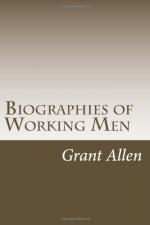For some years more, Mr. Stephenson (he is now fairly entitled to that respectable prefix) went on still further experimenting on the question of locomotives and railways. He was now beginning to learn that much unnecessary wear and tear arose on the short lines of rail down from the pit’s mouths to the loading-places on the river by the inequalities and roughnesses of the joints; and he invented a method of overlapping the rails which quite got over this source of loss—loss of speed, loss of power, and loss of material at once. It was in 1819 that he laid down his first considerable piece of road, the Hetton railway. The owners of a colliery at the village of Hetton, in Durham, determined to replace their waggon road by a locomotive line; and they invited the now locally famous Killingworth engine-wright to act as their engineer. Stephenson gladly undertook the post; and he laid down a railway of eight miles in length, on the larger part of which the trucks were to be drawn by “the iron horse,” as people now began to style the altered and improved locomotive. The Hetton railway was opened in 1822, and the assembled crowd were delighted at beholding a single engine draw seventeen loaded trucks after it, at the extraordinary rate of four miles an hour—nearly as fast as a man could walk. Whence it may be gathered that Stephenson’s ideas upon the question of speed were still on a very humble scale indeed.
Before the Hetton railway was opened, however, George Stephenson had shown one more proof of his excellence as a father by sending his boy Robert, now nineteen, to Edinburgh University. It was a serious expense for a man who was even now, after all, hardly more than a working man of the superior grade; but George Stephenson was well repaid for the sacrifice he thus made on behalf of his only son. He lived to see him the greatest practical engineer of his own time, and to feel that his success was in large measure due to the wider and more accurate scientific training the lad had received from his Edinburgh teachers.
In 1819 George married again, his second wife being the daughter of a farmer at Black Callerton.




